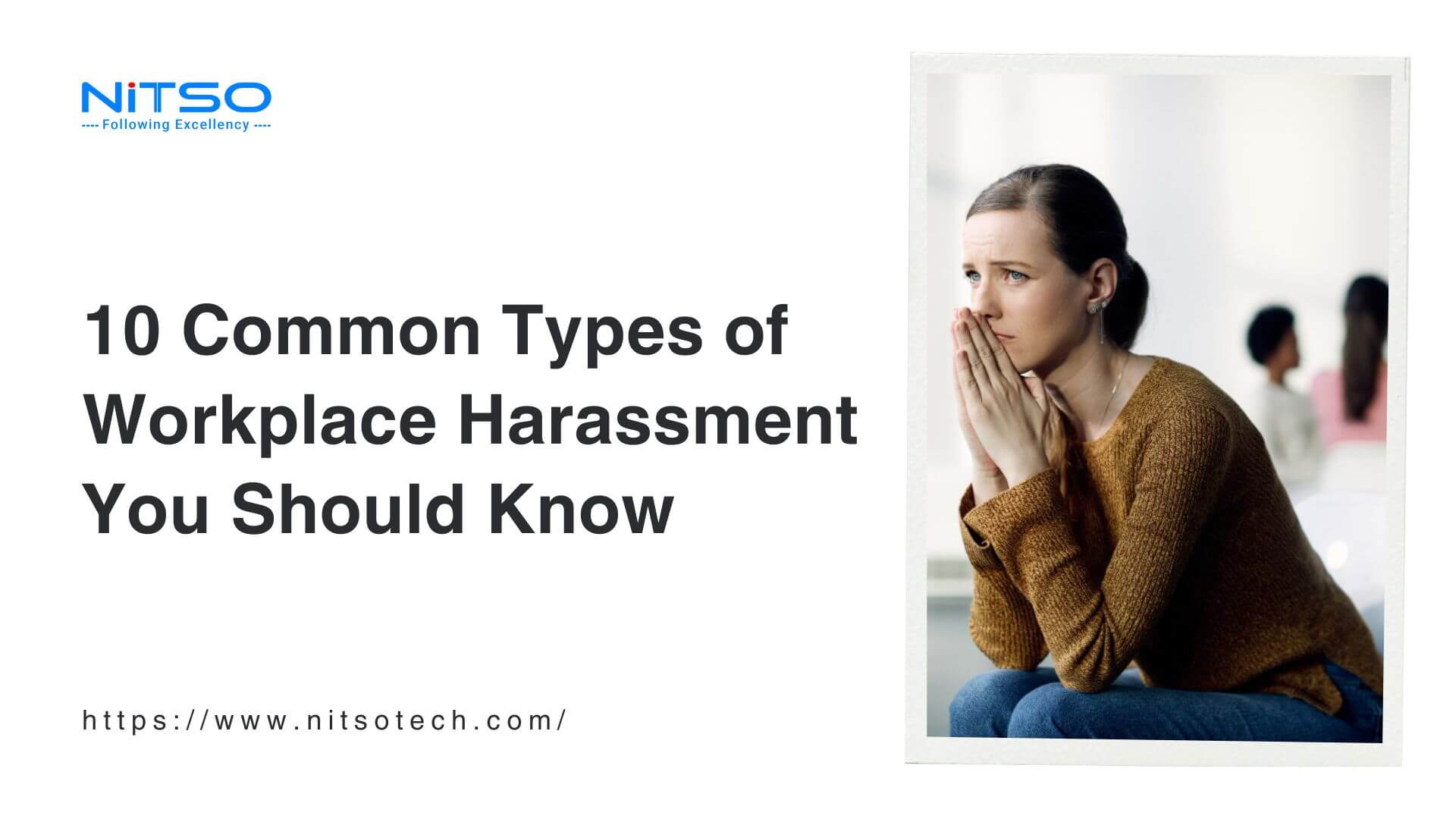Have you ever felt uncomfortable at work due to workplace harassment?
Unfortunately, many employees experience inappropriate words or actions that constitute harassment in their workplace every year. Workplace harassment comes in many forms – including sexual, racial, age-related and more – yet all types cause harm by creating an intimidating, hostile or offensive work environment. No organization is immune. In fact, a 2022 study found that 25% of U.S. workers have endured some form of workplace mistreatment or harassment during their careers. This affects the target’s physical and emotional health while reducing productivity and performance. Ultimately, unchecked workplace harassment jeopardizes an organization’s culture, reputation and bottom line.
The question then becomes: What can be done to address this serious issue?
Implementing workplace harassment prevention policies represents the essential first step. Though no single policy, training or intervention can completely eliminate occurrences, organizations can greatly reduce risk by establishing clear rules, reporting procedures and accountability around unacceptable behaviours. Critically examining biases, barriers and behaviours allows organizations to surface problems early and demonstrate commitment to maintaining workplaces where all people feel safe, valued and empowered. Proactive investment in workplace harassment prevention protects both employees as well as the organization itself.
Table of Contents
10 Common Types of Workplace Harassment You Should Know
1. Sexual harassment
This includes unwanted sexual advances, requests for sexual favours, physical gestures or verbal/written conduct of a sexual nature that creates an intimidating or hostile working environment. It subjects employees to behaviour they find objectionable and offensive when they are in no position to refuse.
Workplace Harassment Examples of Sexual Harassment
- Making crude sexual comments about someone’s appearance
- Sending unsolicited sexually explicit texts or emails
- Sharing inappropriate sexual images without consent
2. Discrimination
Treating employees differently due to protected characteristics like gender, race, age, religion, disability, etc. rather than based on merit. Types include age, disability, racial and gender discrimination. Discriminatory behaviour signals certain groups don’t belong.
Workplace Harassment Examples of Discrimination
- Paying specific racial groups less than other employees
- Not hiring someone because of a disability
- Excluding older workers from training opportunities
3. Bullying
Repeated mistreatment that harms, intimidates, offends, degrades or humiliates employees when there is an imbalance of power that prevents victims from defending themselves. This includes physical, verbal and psychological bullying designed to assert unreasonable dominance over others.
Workplace Harassment Examples of Bullying
- Spreading lies and rumours about a colleague
- Embarrassing or publicly belittling someone
- Sabotaging someone’s work on purpose
4. Physical violence
Physical violence is extreme harassment because employees fear for their physical safety and well-being. Violent behaviours like physical assault incites terror in victims over potential harm and are thus completely unacceptable in a workplace environment.
Workplace Harassment Examples of Physical Violence
- Threatening violence if demands aren’t met
- Blocking someone’s path aggressively
- Getting into a physical fight on company grounds
5. Stalking
Stalking harasses by causing an employee emotional distress and anxiety through repeated intrusive tracking and surveillance of their activities/movements against their consent in-person or online to the point where the employee feels unsafe or afraid. Types include physical stalking, cyberstalking and stalking by proxy.
Workplace Harassment Examples of Stalking
- Secretly following someone home from work
- Sending excessive texts asking for someone’s location
- Hacking someone’s social media account
6. Quid pro quo
Seeking sexual or other favours in exchange for work-related benefits like promotions raises or continued employment. The harasser insists submission is necessary for the employee to keep their job or avoid punishment. Saying no can cost someone’s livelihood despite the best qualifications and performance.
Workplace Harassment Examples of Quid pro quo
- Asking for dates or sexual favours to avoid termination
- Requiring staff to work unpaid overtime or lose their job
7. Verbal harassment
Verbal harassment through insults and mockery harasses employees by constantly putting them down, humiliating them in front of colleagues and portraying them as inferior, all of which lead to harmful psychological consequences. This constant abuse takes an emotional toll.
Workplace Harassment Examples in Verbal Harassment
- Using racial slurs or derogatory language
- Making cruel comments about someone’s religion or culture
- Mocking someone’s accent or disability
8. Visual depictions
The display of visual depictions harasses by singling out employees based on gender, race, age or other factors in a degrading, vulgar and demeaning manner that signals they are inferior and unwelcome.
Workplace Harassment Examples in Visual Depictions
- Displaying offensive cartoons targeting someone’s ethnicity
- Circulating memes mocking gender identities
- Emailing pornography without consent
9. Online harassment
Online harassment constitutes workplace harassment by employing technology to deliberately intimidate, embarrass and show disdain for employees through the use of email, texts, social media or other technology to repeatedly ridicule, insult or spread lies/rumours about an employee.
Workplace Harassment Examples in Online Harassment
- Posting an employee’s photo on a site that attacks their religion
- Sending degrading messages from a fake social media account
- Threatening an employee via texts and messaging apps
10. Retaliation
Finally, retaliation for speaking up against harassment creates further harassment by amplifying the original unwanted behaviours and breeding fear in the workplace. Retaliation punishes victims who dare report misconduct by demotion, discipline, shift changes or termination. This discourages reporting and enables further harassment.
Workplace Harassment Examples in Retaliation
- Demoting someone for reporting discrimination
- Denying someone a promotion because they rejected advances
- Firing someone for cooperating in an investigation
How to Prevent Workplace Harassment?
Workplace harassment remains an insidious issue that erodes organizational culture and employee well-being if left unchecked. However, through proactive efforts, companies can foster environments where employees feel psychologically safe to excel in their roles while being treated with dignity and respect. The following set of recommendations equips companies with the necessary tools and protocols to mitigate risks and safeguard employees.
1. Implement Strong Anti-Harassment Policies
Create clear, no-tolerance policies regarding discrimination, bullying, violence, retaliation etc. Outline prohibited behaviours, complaint processes, investigation procedures and potential consequences. Ensure leadership demonstrates a commitment to enforcing policies without bias. Update regularly to address emerging issues.
2. Conduct Comprehensive Harassment Training
Require all staff across seniority levels to regularly complete training highlighting examples of unacceptable conduct, how to report incidents safely, bystander responsibilities, anti-retaliation rights etc. Training should clarify grey areas on questionable behaviours. Tailor modules to address issues unique to certain roles.
3. Encourage & Facilitate Reporting
Have multiple trusted designees like HR, legal counsel, and ethics officers whom employees can approach to lodge verbal or written complaints. Implement easy confidential reporting through hotlines and complaint boxes. Reassure employees they can report without fear of retribution. Investigate every claim promptly and thoroughly.
4. Improve Transparency Around Investigations
Keep claimants updated on the investigation status and actions taken once claims are substantiated or dismissed after careful review. This reassures employees their concerns are being addressed while preventing abusive accusations. Publicize disciplinary measures undertaken while protecting claimant privacy.
5. Strengthen Screening & Selection
Enhance background checks and screening questions during recruitment to help assess candidate integrity, ethics and compatibility with company values. Evaluate candidates holistically to mitigate bias. Proactively surface red flags related to past allegations, anger issues, emotional volatility etc.
6. Cultivate a Respectful Workplace Culture
Encourage employees to watch their language and inappropriate communications. Set expectations to collaborate cordially across genders, races, age groups etc. Celebrate diversity using speaker series, mentoring programs and Employee Resource Groups tailored to underrepresented segments of the workforce. Also, keep an eye out for Signs and Symptoms of Employee Burnout in the Workplace.
Wrapping Up
The bottom line – no employee should feel threatened or unsafe when they show up to work. Companies have an ethical obligation to establish a protective, inclusive environment for their staff. Though no workplace can entirely eliminate harassment risks, organizations can substantially curb problems through strong leadership and comprehensive policies that leave absolutely no room for hostility, belittlement or inappropriate conduct.
By setting clear rules, facilitating confidential reporting, responding swiftly and compassionately to grievances, and proactively addressing cultural issues, employers convey that workplace harassment will not be tolerated. Employees should be empowered to reach their full potential in an environment free from discrimination, retaliation and fear. If companies pledge to minimize harassment, they can foster higher job satisfaction, boosted teamwork, improved trust in leadership and overall performance gains. Workplace dignity and employee well-being must remain priorities.
In essence, harassment prevention comes down to workplace vigilance and declaring an unequivocal commitment to safety and respect for all. The recommendations outlined above provide an organizational roadmap to get there – now responsible implementation must follow.
Article you might be interested in: Understanding HR Executive Roles and Responsibilities
FAQs Related to Workplace Harassment
What is workplace harassment?
Workplace harassment involves any unwelcome conduct, whether verbal, physical, or visual, that creates an intimidating, offensive, or hostile work environment. This can include inappropriate jokes or comments, offensive gestures or touching, bullying, intimidation, or the display or sharing of offensive material.
How would you handle harassment?
If you experience any harassment at work, document all incidents, including dates, times, locations, witnesses present, and specific behaviours. Then report it immediately per company policy, which may involve notifying your manager, HR representative, a senior leader, or an anonymous ethics hotline. Most companies strictly prohibit retaliation.
Is workplace bullying a new form of discrimination?
Workplace bullying can be considered a non-protected form of harassment and discrimination. While bullying behaviour in itself may not fall into typical categories of discrimination based on protected classes, its effects can be equally detrimental in creating a hostile work environment. Companies should have clear anti-bullying and anti-harassment policies.
Is it reasonable to allow access to Social Media at work?
Allowing some personal use of social media during work hours can boost employee morale and creativity. However, companies need social media and internet use policies to prevent distraction, maintain security, and prohibit inappropriate content. Rules regarding confidential data, customer privacy, hate speech, explicit material, and harassment should be established and enforced.
How to combat bullying in the workplace?
Strategies to combat workplace bullying include establishing clear conduct policies, implementing reporting procedures without fear of retaliation, properly investigating allegations, and taking corrective action if bullying occurs. Compassion training and coaching in emotional intelligence skills can also help prevent workplace bullying by improving relationships and communication between employees.
What is targeted harassment and how can it be stopped?
Targeted workplace harassment involves bullying, intimidation, or other aggressive behaviours focused on an individual or specific group of employees. To stop it, companies need to identify if patterns of repeated misconduct exist, then take swift action, such as thoroughly investigating while protecting the targeted individual, requiring anti-harassment training, altering working arrangements to limit interactions, or dismissing harassers demonstrating continued egregious behaviours.
How to overcome harassment at the office?
Strategies for overcoming workplace harassment include reporting each incident properly per company policy; seeking allies and social support from coworkers, friends and family; working with HR to address conflicts or re-assign job duties; sticking up for yourself in a professional manner; focusing energy on the job; and seeking counselling if harassment causes emotional distress impacting work or mental health.








0 Comments